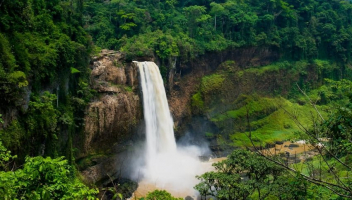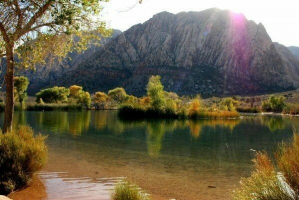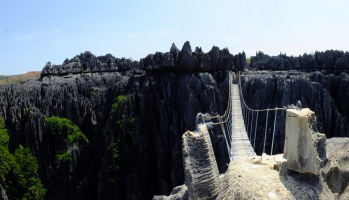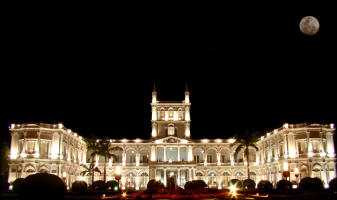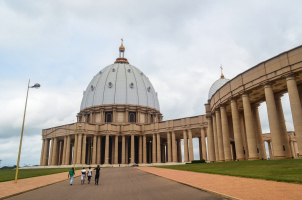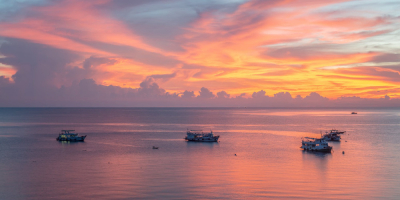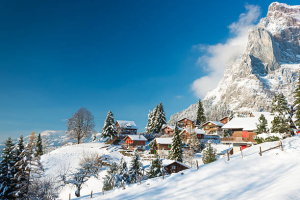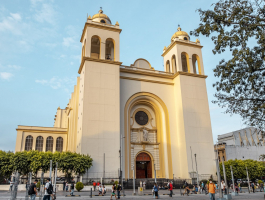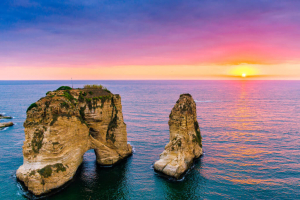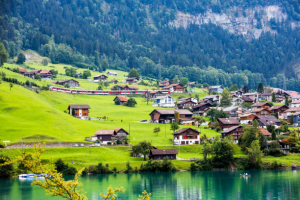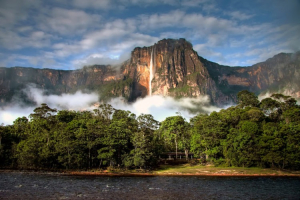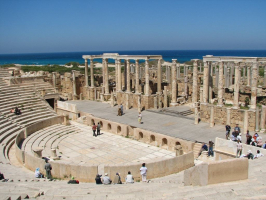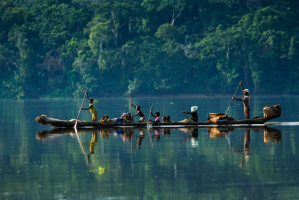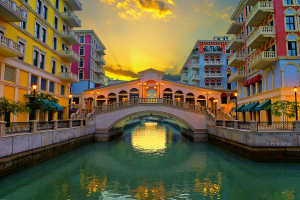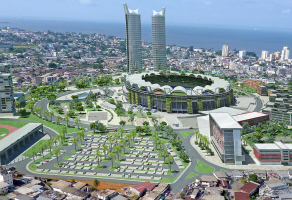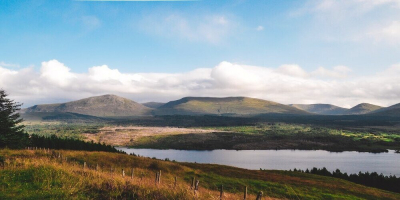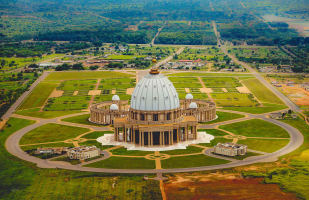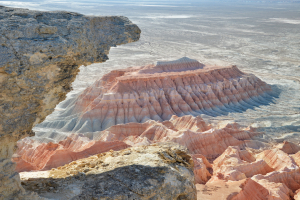Top 10 Best Places to Visit in Phnom Penh
Vibrant, busy Phnom Penh is the heartbeat of Cambodia. This huge metropolis, spread out over the Tonlé Sap and Mekong Rivers, is a city of wide central ... read more...boulevards and small back lanes, where new and old meet. Travelers planning to visit Cambodia's most popular tourist attraction, Angkor Wat, can profit greatly from a stop in the capital, which houses the excellent National Museum of Angkor. Read a list of the best Best Places to Visit in Phnom Penh for more ideas on what to see and do.
-
The Choeung Ek Killing Fields are a gloomy reminder of the Khmer Rouge's terror, whose vicious dictatorship ruled Cambodia between 1975 and early 1979, with the goal of transforming the country into a socialist agrarian society. In under four years, it's estimated that between one and three million Cambodians were killed under Pol Pot's totalitarian authority. Many perished because of food and disease, but also hundreds of thousands of Cambodians - intellectuals, educated individuals like as teachers and doctors, government opponents, and even anyone suspected of being an opponent - were slain.
It is estimated that 17,000 people died here at Choeung Ek. The victims here were taken from S-21, the Khmer Rouge's maximum-security jail that is now the Tuol Sleng Museum. There are 129 mass graves here, with 86 of them excavated and the bones of 8,985 persons exhumed. A memorial stupa with over 8,000 skulls stands in the heart of the region. A visit here is a really somber experience that will help you comprehend this turbulent period in Cambodia's contemporary history. Choeung Ek is located just off Monireth Boulevard.
The Killing Field and Toul Sleng Genocide Museum (S21) Tour can help you properly comprehend what happened here and the horrors of the Khmer Rouge government. During this tour, a driver will pick you up and bring you 14 kilometers south of Phnom Penh to the Choeung Ek Genocidal Center, where you will spend two hours visiting the old orchard that became the site of the mass graves. You'll then return to the city to the Tuol Sleng Genocide Museum, which is housed inside a former high school turned maximum-security prison.
Google rating: 4.6/5.0
Phone: +855 23 305 371
Adress: Choeung Ek Street, Phnom Penh, CambodiaWebsite: n/a
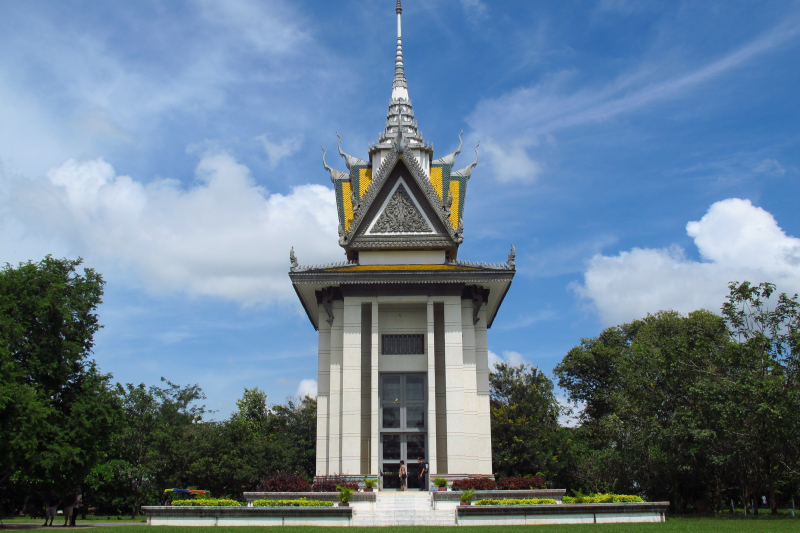
vi.wikipedia.org -
The Tuol Sleng Genocide Museum is located in the same site where the so-called Security Prison 21 (S-21) once functioned. It comprises four buildings that were part of the former Tuol Svay Prey School before becoming an interrogation, torture, and death facility (between 1975 and 1979). Almost majority of those sent here were former Khmer Rouge members who were turned on during one of the regime's many internal purges.
The areas that were utilized as torture rooms can be discovered in the "A" building. The "B", "C", and "D" buildings include the spaces that were utilized as cells. At present, hundreds of images of victims are displayed in the "B" building and there is a location with the words of victims and perpetrators in the "D" building. The graves of the remaining 14 victims discovered on the site, as well as a monument honoring Khmer Rouge victims, are secured in the backyard.
The museum has an archive that preserves the documents and tools that were used for tortures, as well as photographs and pieces of art. The thorough documents and images have survived despite the fact that the prison was quickly abandoned when the Vietnamese invaded Phnom Penh in 1979.Google rating: 4.6/5.0
Address: St 113, Phnom Penh 12304, Cambodia
Phone: +855 77 252 121
Website: https://tuolsleng.gov.kh/en/
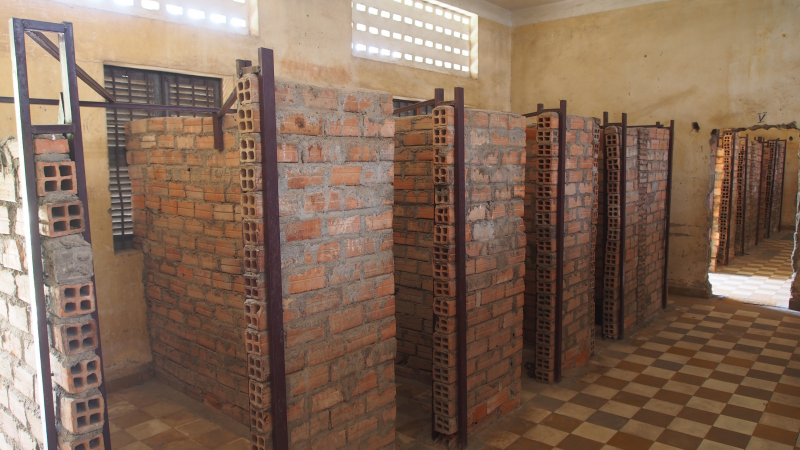
commons.wikimedia.org -
Independence Monument is one of the best Places to Visit in Phnom Penh. The Independence Monument in Phnom Penh was completed in 1958 in celebration of Cambodia's freedom from France in 1953. You may easily access the monument by taking a 10-minute walk behind the Royal Palace. The monument, which stands in the center of the traffic circle, is 20 meters high and shaped like a lotus, clearly reminiscent of the Angkor Wat towers. The site is also a proud memorial to those who gave their lives for the country. Though visitors are not allowed to enter the monument, there is a vast open park that seems to be a popular area with the residents - Jogging, walking, or simply feeling the nice breezes.
The Independence Monument comes alive at night. Everything around the location including the fountains is illuminated by blue, red, and white lights, which are the colors of the Cambodian flag. The monument is the focal point of action on important events such as Independence Day on 7 January and Constitution Day on 24 September. A high-ranking official or a royal member lights the ceremonial flame, and floral wreaths are set on the monument's stairs.
Google rating: 4.5/5.0
Location: Sihanouk Boulevard, Phnom Penh
Phone: +855 96 563 8118Website: tourismcambodia.com/travelguides/provinces/phnom-penh/what-to-see/
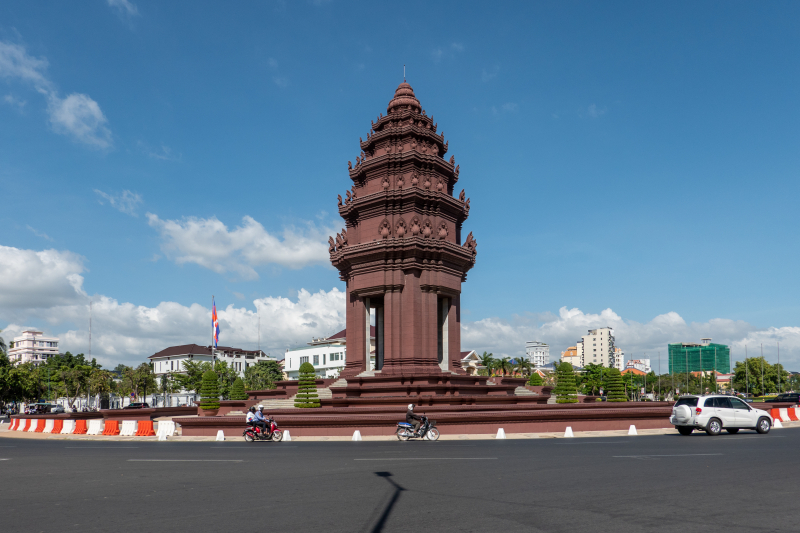
en.wikipedia.org -
Oudong is a former town of the post-Angkorian period (1618–1863) situated in present-day Phsar Daek Commune, Ponhea Lueu District, Kandal Province, Cambodia. Located at the foothill of the mountain Phnom Oudong, also known as Phnom Preah Reach Troap, about 35 km northwest of the modern capital Phnom Penh via National Road No. 5, Oudong was a royal residence and Cambodia's capital for almost 250 years until 1866. A monumental royal necropolis of sovereigns of several centuries is scattered on top of the prominent bisected mountain, which runs from the southeast to the northeast.
In Oudong the stupas and temples atop the hill of Phnom Preah Reach Throap are well worth a trip from town, particularly if you want to enjoy some excellent vistas from the hill top, across the surrounding countryside. The large temple of Vihear Preah Ath Roes with its 20-meter-high Buddha is the hill top's main attraction. Other temples and stupas here range in age from the 17th century to the modern era. Some of the buildings with the most interesting intricate facade decorations include the Ang Doung stupa built by King Norodom and the Mak Proum stupa built by King Monivong.
Google rating: 4.4/5.0
Location: Ponhea Lueu District, Kandal Province, Cambodia
Phone: +855 10 405 086
Website: https://whc.unesco.org/en/tentativelists/6459/
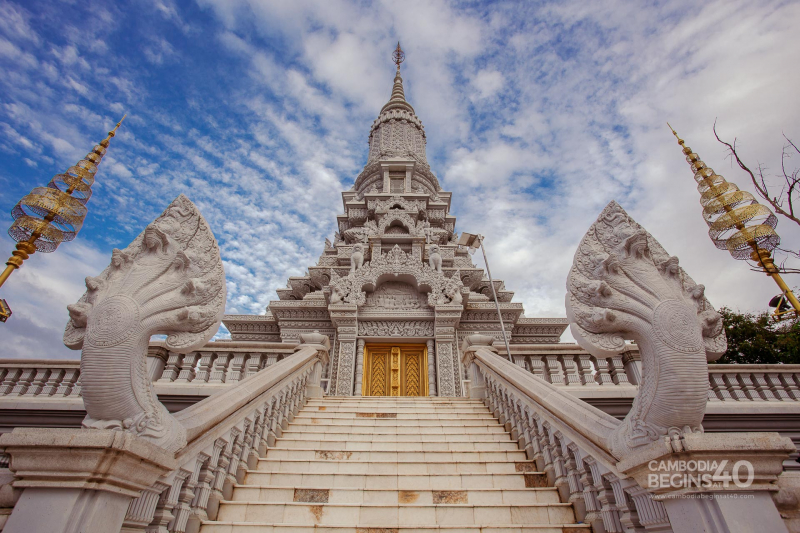
cambodiabeginsat40.com 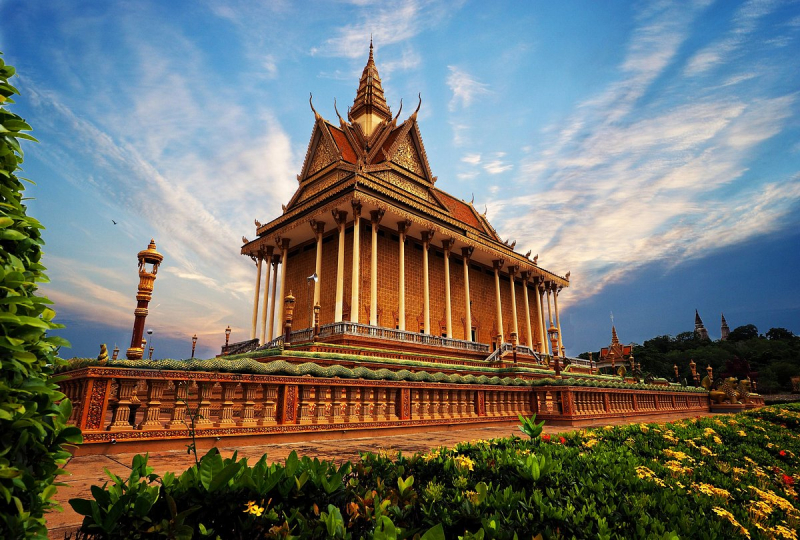
en.wikipedia.org -
Wat Ounalom is located at Ly Yoat Lay St. 172, Phnom Penh, near the Royal Palace of Cambodia. As one of the important temples, the center of Buddhism in Cambodia. This temple was built in 1440 during the reign of King Ponhea Yat. It is also the home of the country's Maha Nikaya sect and the residence of a Zen master who holds an important position. With a rich history, Cambodia's main religion is the invaluable knowledge that visitors can gain after visiting this temple.
Wat Ounalom is located right on the banks of the Tonle Sap River. This complex includes 44 houses, the architecture has its own unique features, so it attracts many tourists. This site stores about 30,000 books of sutras and has more than 500 Buddhist monks come to study. However, in 1974, when the Khmer Rouge regime occupied Phnom Penh and destroyed many parts of Ounalom temple, many books in the temple were lost. Only when the war ended, Wat Ounalom was extensively renovated.
When viewed from the outside, Wat Ounalom stands out for its typical Cambodian architectural style with its curved roof contour painted in yellow and red. In particular, the lawns and bushes are extremely lush, well-manicured, bringing the campus a peaceful beauty. Wat Ounalom Temple with 3 main buildings, the temple in the middle, the two adjacent buildings are uniquely designed. This architecture is extremely elegant and unique with the traditional Khmer style, imbued with the delicate style of Angkorian architecture.
Google rating: 4.4/5.0
Address: Preah Ang Eng St. (13), Phnom Penh 12206, Cambodia
Website: n/a
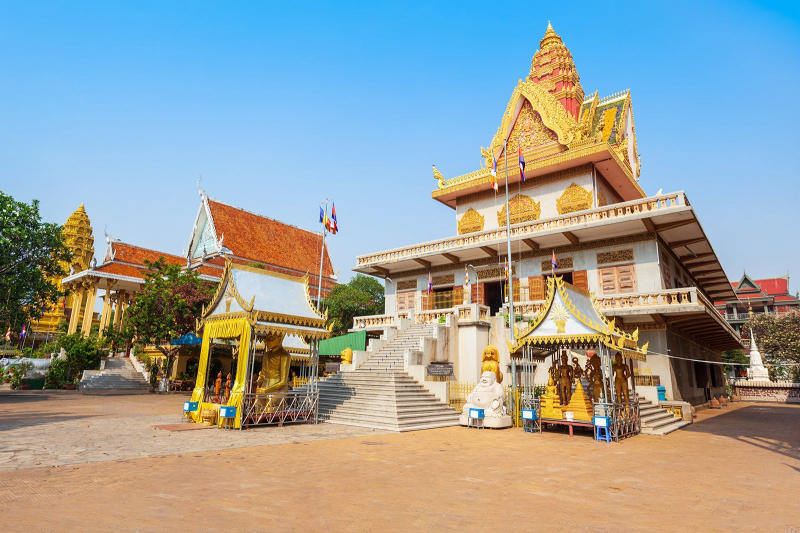
vn.trip.com 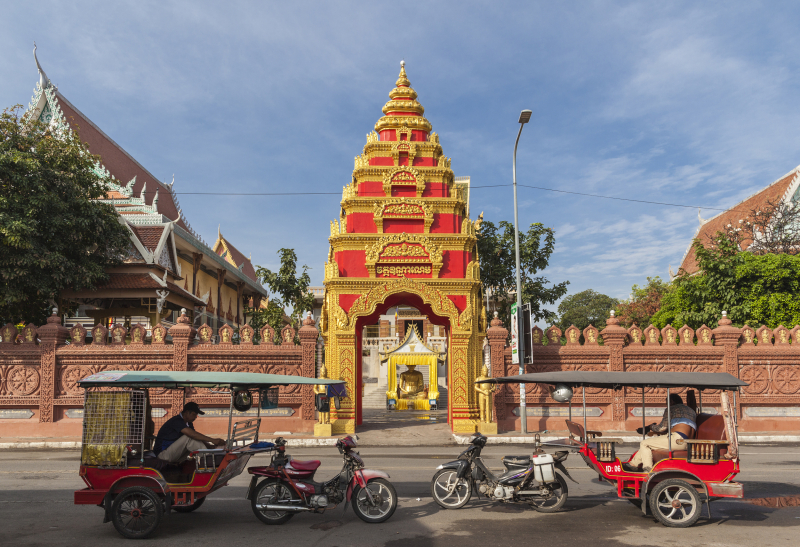
vn.trip.com -
Phnom Chisor is a popular ancient temple and contemporary monastery site located around 50 km south of Phnom Penh in Takeo Province, Cambodia. The ancient temple is quite large and wonderous, built on the hillside with a spectacular staircase that leads down to two entrance pavilions down on the plains below with the outer pavilion some 700 m away to the east which is further preceded by an ancient basin.
The temple proper, on the hillside, contains a set of six brick temples with the largest being the central temple with a front building open to the east that is surrounded by five secondary temples, also open to the east, plus there are two "library" that open to the west. All of that is housed within a galleried and chambered laterite enclosure wall.
As previously stated, the center temple is a big brick square brick temple with a very large hall attached to its front. The brick temple still has rendering, which is interesting, although I'm not sure when it was done. Inside, you can pray in front of a swarm of colorful flashing lights.
Google rating: 4.4/5.0
Address: the E, Stairway of Chiso Mountain from, Cambodia
Phone: +855 69 568 375
Website: n/a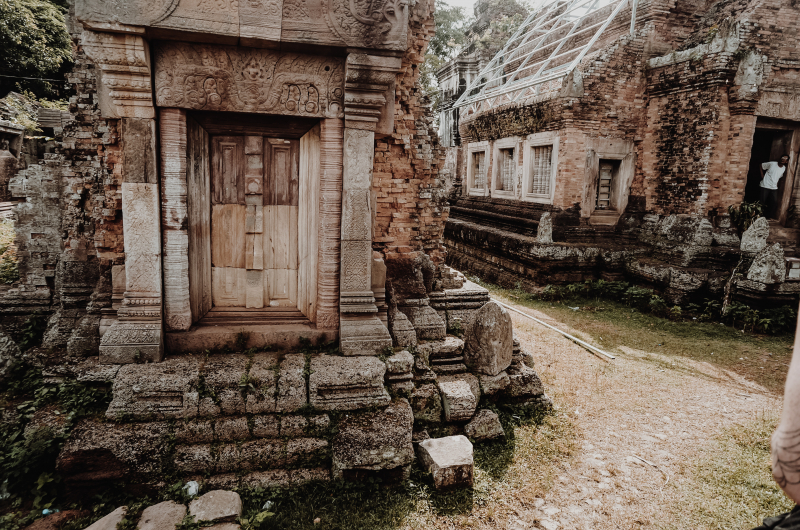
notluxe.com 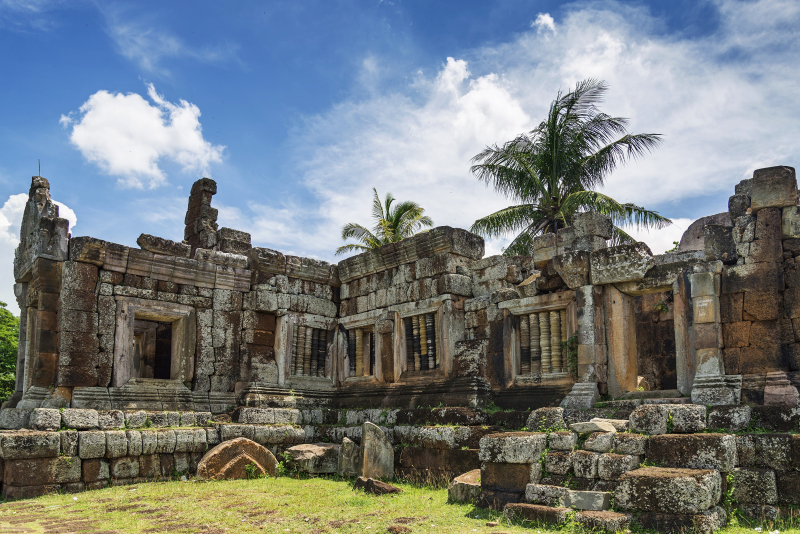
notluxe.com -
Wat Phnom is one of the best Places to Visit in Phnom Penh. The pagoda was built in 1373, located in the center of Phnom Penh capital and is also the oldest pagoda in Phnom Penh. Every year, the pagoda attracts a large number of pilgrims from all over the country and is a must-see attraction for tourists when coming to Cambodia.
Located at an altitude of 27m above the surrounding temple, the pagoda is considered the highest point in the city and also the tallest religious building in the capital Phom Penh. The ancients said that the pagoda was built by a rich widow named Daun Penh. She invested herself in building the temple on an artificial hill. After the historic flood in 1372, Mrs. Penh recovered a wooden tree, it would not be worth mentioning if there were not 4 Buddha statues inside the tree. Then, Mrs. Penh built a hill and built a small temple to worship 4 Buddha statues. Later, the surrounding area was called the hill in Cambodian as Phnom and its creator's name was Mrs. Penh, hence the name Phnom Penh.
The sacredness of the four Buddha statues in Wat Phnom has made residents from all over the world move here to live around the temple and gradually form a community. Phnom Penh officially became the capital of the Khmer about 600 years ago after King Ponhea Yat abandoned Angkor in 1422.
The current pagoda was rebuilt at the end of 1926 and there have been many additional constructions over the centuries. The pagoda has two directions to visit, visitors to the temple will go one way by another and down by another. The road to the temple is not high, on the way up there is a statue of the god snake Naga and two spiritual lions - these are familiar animals in Cambodian beliefs and are found in most of the Angkor complex. The pagoda on the top of the hill worships Buddha gods just like other temples in Cambodia.
Google rating: 4.4/5.0
Address: : Wat Phnom Road, Phnom Penh, Campuchia
Website: https://www.tourismcambodia.com/attractions/phnompenh/wat-phnom.htm
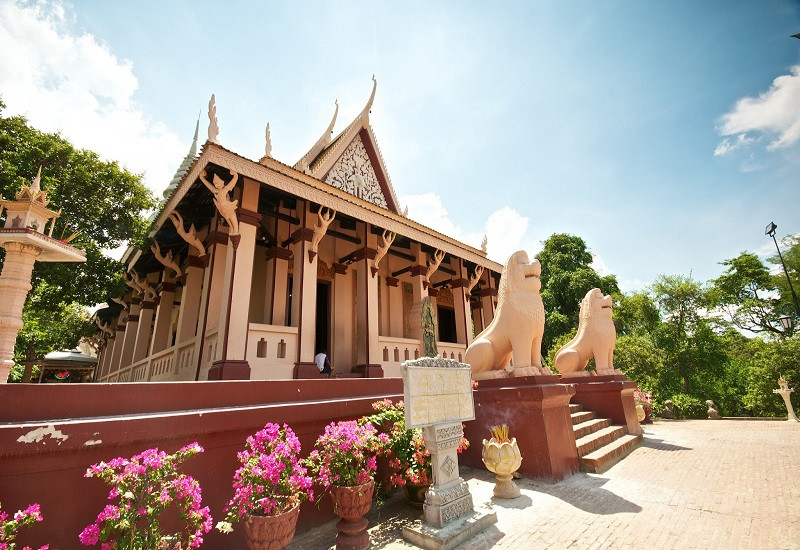
vn.trip.com 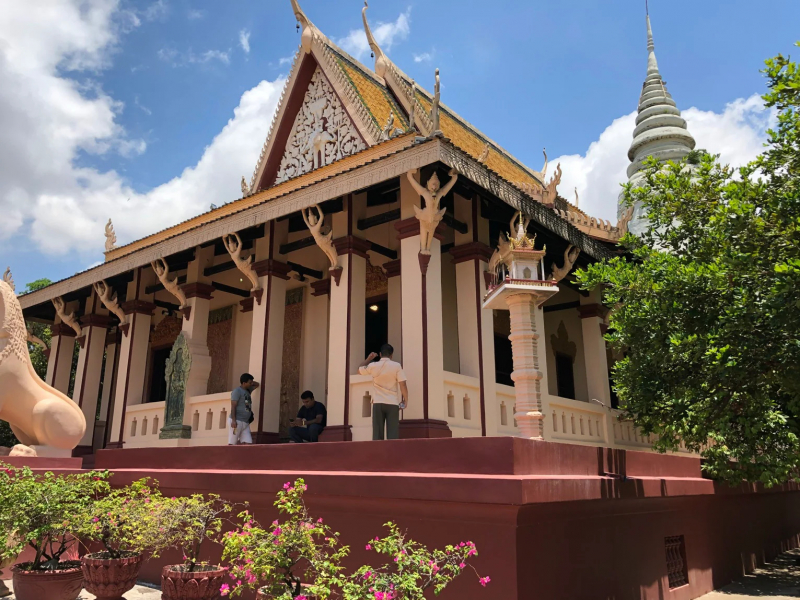
vn.trip.com -
Koh Dach and Koh Oknha Tei (both more frequently referred to as Silk Island by international visitors) are two Mekong River islands linked together by a bridge, sitting about 10 kilometers north of the center city. The islands are recognized by their "Silk Island" appellation due to the big community of silk weavers who dwell on Koh Dach and Koh Oknha Tei. Visitors are frequently invited inside local workshops to observe weavers at work and inspect the silk items for sale.
Both islands are ideal for a day trip. There's not a whole bit to do here, but it's a calm countryside retreat within easy reach of the main city. If you want to really explore the island, renting a bicycle is the best way to move around. Ferries to both Koh Dach and Koh Oknha Tei depart on a regular basis from three separate ferry stations on the river banks opposite the islands. Some tour boat companies in Phnom Penh also provide tours here.
Google rating: 4.3/5.0
Location: Phnom Penh
Website: travelfish.org/sight_profile/cambodia/phnom_penh_and_surrounds/phnom_penh/phnom_penh/496
-
The Khmer name for this market, Phsar Thmey, which means "New Market," is located in the centre of Phnom Penh. This is the most amazing market with a distinctive colonial architecture, a beautiful building both technically and artistically, built in 1937 with the French designer Louis Chauchon. Central Market, designed in the Art Deco style, is Asia's largest building in this style.
The market is pale yellow in color and features a massive central dome with four huge corridors extending out from it. Each corridor contains many shopping stalls with thousands of different things. The good point for this popular market is that the structure is totally closed but nevertheless very well-ventilated, making shoppers and vendors feel comfortable inside, escaping rain or the high weather outside.
At the market, you can find silver and gold jewelry, antique coins, antique watches, clothing, and silk products. When going through the market gate, there are many vendors selling oil and water-oil from Thailand, Cambodia, and Indonesia, as well as export clothing stalls on both sides. Further, travelers may simply purchase real Cambodian traditional artifacts as gifts for relatives and friends. One of them is a bandanna in any of your favorite colors, such as red, white, or black and white with stripes. And you should vigorously bargain, pay down half or 1/3 of the price quoted by the seller because shopping in Phnom Penh is cheaper than Siem Reap.
Google rating: 4.2/5.0
Address: Street 126, Phnom PenhWebsite: https://kaotours.com/psar-thmei/
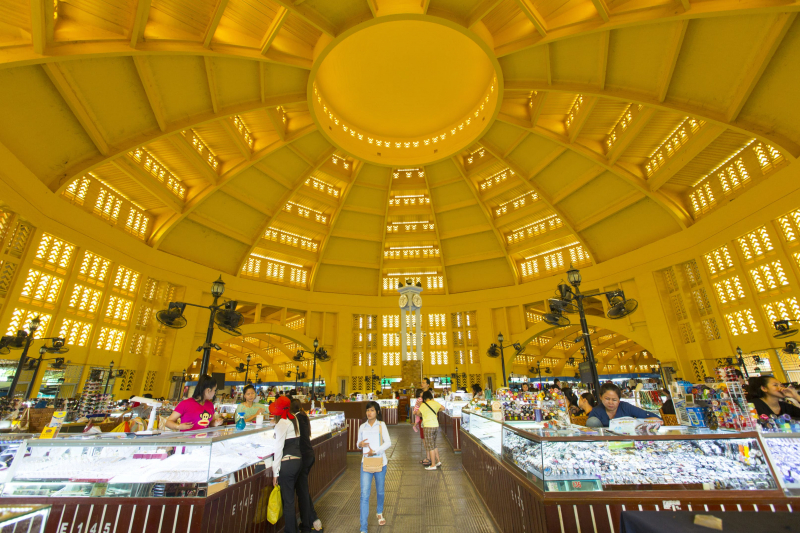
lonelyplanet.com -
The junction 163 and 432 street are located in the city's south, on the other side of Issarak town. The precise address is Tuol Tom Poung 1, Chamkar Mon district, 155 street. Although the exterior of the market is not attractive, being narrow and lacking an air conditioner, it is nonetheless a good shopping location for antiques, Buddha statues, silk clothing, silver jewelry, precious stones, and collections of old banknotes from bygone centuries.
Besides handmade and antique products, you may discover some famous brands such as Banana Republic, Billabong, Calvin Klein, Gap, or Colombia for only 1/3 of the price for each item. As you delve deeper into the market, you'll see some fantastic lamps, wood carvings, linens, cookware, and other items. If you are fatigued, you can stop and take a calming drink at one of the cafe shops around or at one of the other street food vendors inside the market. Because of the wide selection of goods available here, you should tour around many stalls without references before purchasing any item, and don't forget to barter with merchants to acquire the best possible price.
Google rating: 4.1/5.0
Address: St. 163 Corner of St. 440, Phnom Penh, Cambodia Phnom Penh, 12310, Cambodia
Phone: +855 15 222 930Website: https://www.bestpricetravel.com/travel-guide/russian-market-phnom-penh.html












